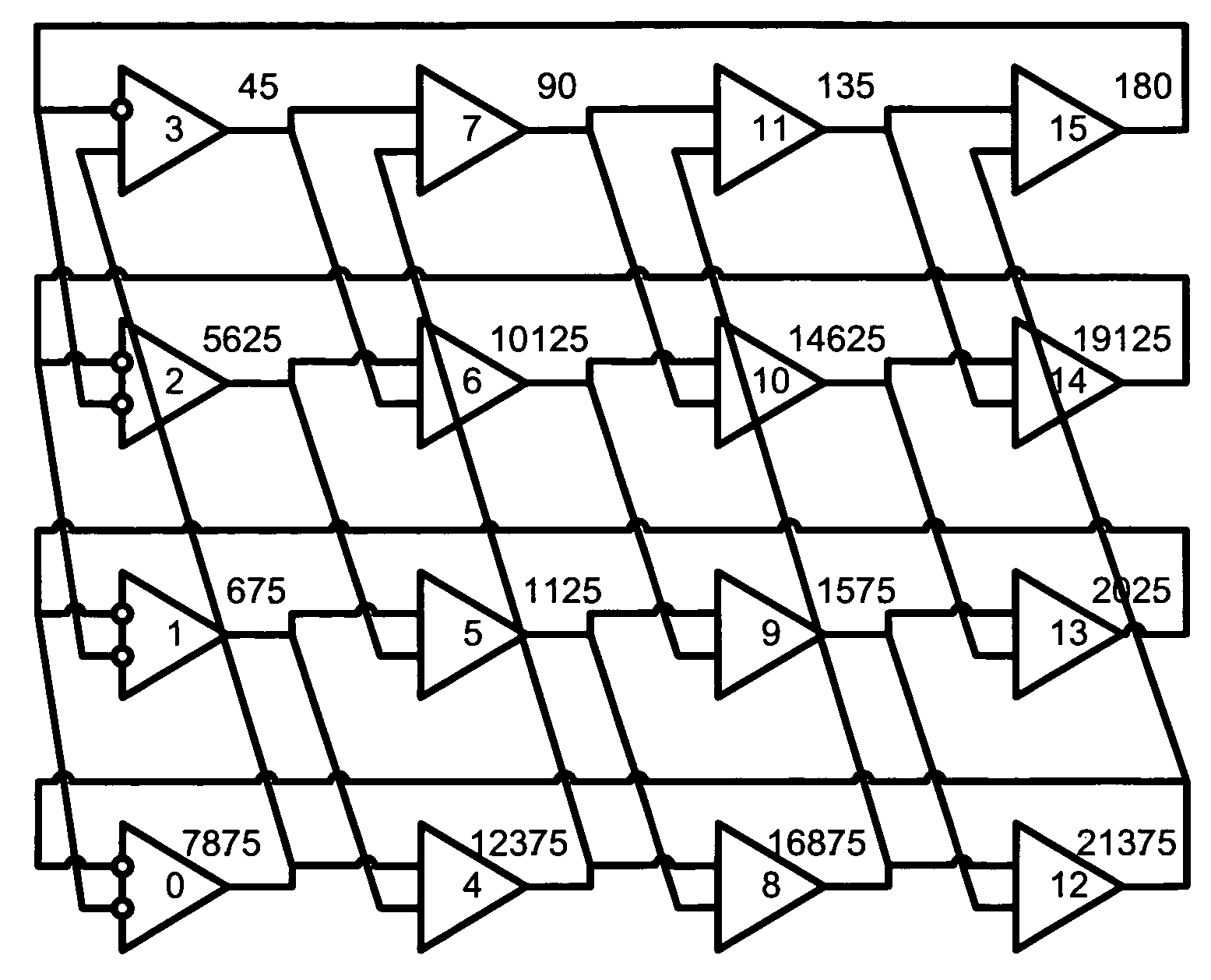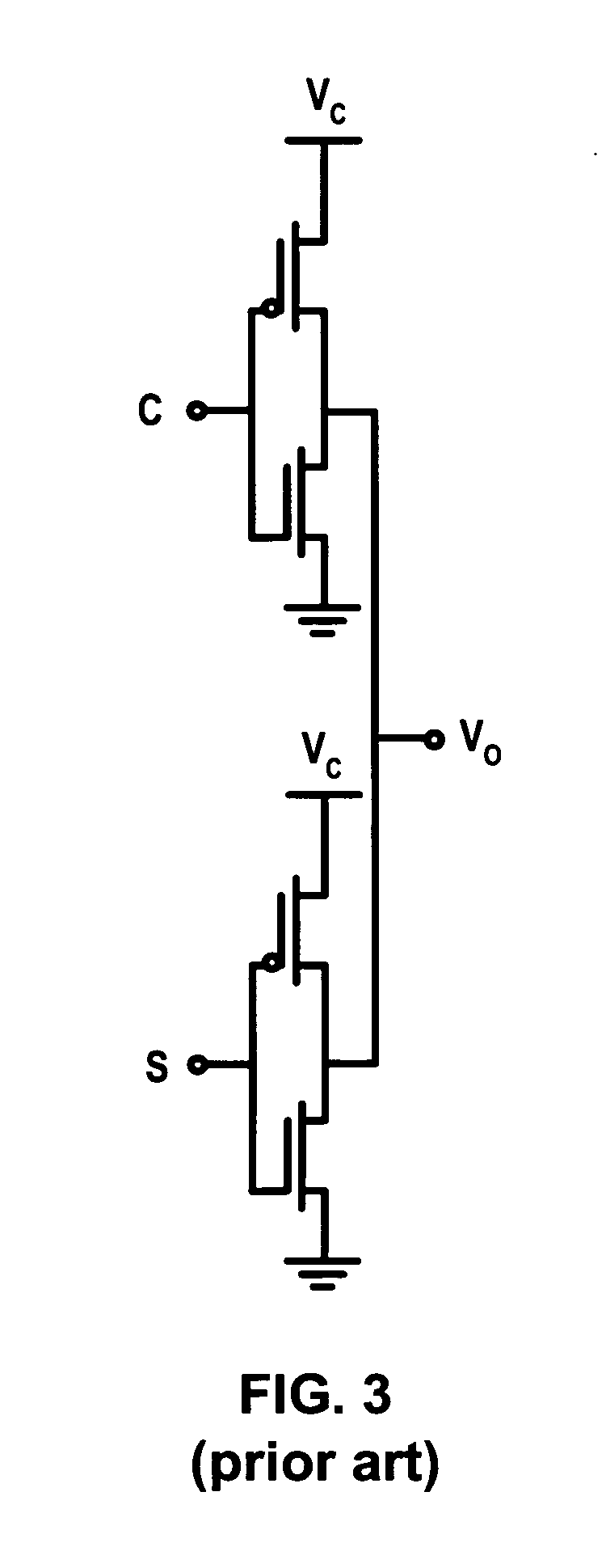Array oscillator and polyphase clock generator
a clock generator and oscillator technology, applied in the direction of pulse automatic control, pulse generation by logic circuits, pulse techniques, etc., can solve the problems of limited phase resolution, limited design, and uneven phase distribution, so as to improve the timing accuracy of the clock, reduce jitter, and high speed
- Summary
- Abstract
- Description
- Claims
- Application Information
AI Technical Summary
Benefits of technology
Problems solved by technology
Method used
Image
Examples
Embodiment Construction
[0134] The invention will now be described in detail without limitation to the generality of the present invention with the aid of example embodiments and accompanying drawings.
[0135] Consider FIG. 11, which is an example of an array of inter-coupled ring oscillators according to the present invention. Each ring oscillator comprises an inverting stage and a series of non-inverting stages. For example, a first ring oscillator comprises inverting stage P0 and a series of non-inverting stages P4, P8, P12 and the second oscillator comprises an inverting stage P1 and non-inverting stages P5, P9, P13). In this embodiment, each stage should be assumed to be the same and formed from a differential inverter. To create the non-inverting stages, the two inverting inputs to the stage are swapped. Each inversion of the signal is represented by a circle with white inside, as is the common practice for engineering drawings.
[0136] Preferably, the suitable buffer stages are as disclosed by the inv...
PUM
 Login to View More
Login to View More Abstract
Description
Claims
Application Information
 Login to View More
Login to View More - R&D
- Intellectual Property
- Life Sciences
- Materials
- Tech Scout
- Unparalleled Data Quality
- Higher Quality Content
- 60% Fewer Hallucinations
Browse by: Latest US Patents, China's latest patents, Technical Efficacy Thesaurus, Application Domain, Technology Topic, Popular Technical Reports.
© 2025 PatSnap. All rights reserved.Legal|Privacy policy|Modern Slavery Act Transparency Statement|Sitemap|About US| Contact US: help@patsnap.com



